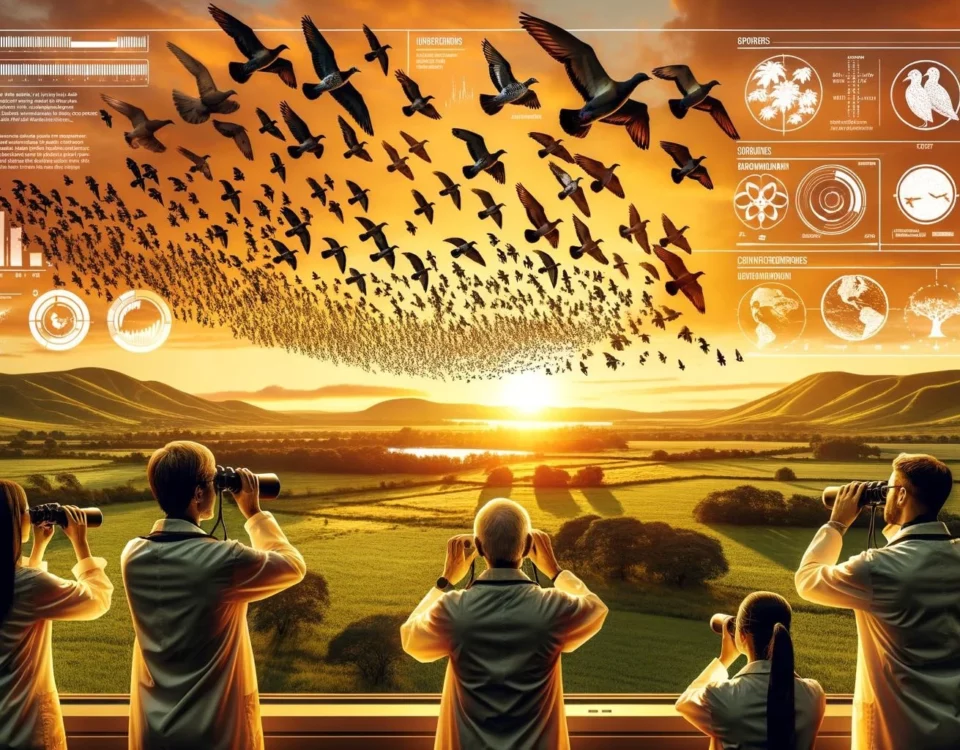Pigeon migration is a fascinating phenomenon that has been observed for thousands of years. Throughout history, pigeons have played various roles in human society, from military messengers to carriers of commerce and communication. In this article, we will explore the history of pigeon migration, including their domestication, use in warfare, and their current population status.
Key Takeaways
- Pigeons have been domesticated for thousands of years and are mentioned in ancient texts from Mesopotamia.
- They were used as military messengers as early as the 1st century CE and were extensively used in warfare in the 19th century.
- Pigeons were also employed for commerce and navigation purposes.
- The passenger pigeon, known for its massive flocks, was hunted to extinction by humans in the early 1900s.
- Today, feral and wild pigeons have established populations around the world.
Domestication and Early Uses of Pigeons
The exact date of pigeon domestication is uncertain, but it is believed to have occurred between 10,000 and 5,000 years ago. The earliest written records of pigeons come from Mesopotamian cuneiform tablets dating back over 5,000 years. These texts suggest that pigeons were already being used for various purposes at that time.
Pigeons were used as messengers during warfare in ancient times. Pliny the Elder described the use of pigeons as military messengers during the 1st century CE. By the 19th century, homing pigeons were extensively used for military communication, especially during periods of siege or when traditional communication methods were unavailable.
Pigeons were also employed in commerce and navigation. They were used to carry messages, documents, and even small packages across distances. Pigeons were trained to fly between specific locations, making them reliable carriers in situations where other means of transportation were impractical or unavailable.
The Role of Pigeons in Warfare
During times of conflict, pigeons played a significant role in military communication. The sport of flying messenger pigeons, known as pigeon racing, has a long history and was well-established as early as 3000 years ago.
One of the most famous examples of pigeon communication in warfare is the use of carrier pigeons during the siege of Paris in 1870-1871. The besieged residents of Paris sent messages by pigeons and balloons, and pigeons were also used to send messages back to Paris, providing a vital communication lifeline during the long and challenging siege.
Homing pigeons were particularly valuable for their ability to find their way back to their home loft, even when released from unfamiliar locations. Their navigational skills and homing instincts made them ideal messengers, ensuring that crucial information reached its destination in a timely manner.
Pigeon Migration and Current Status
Pigeons are known for their ability to migrate over vast distances. While many pigeon species are non-migratory, some species, such as the passenger pigeon, were famous for their massive migratory flocks.
The passenger pigeon, once abundant in North America with flocks numbering in the billions, was driven to extinction by human hunting in the early 1900s. The loss of the passenger pigeon serves as a poignant reminder of the impact human activity can have on the environment and the fragile balance of ecosystems.
Today, feral and wild pigeons, descendants of domesticated breeds, have established populations around the world. They can be found in cities and urban areas, where their adaptability and ability to scavenge for food have allowed them to thrive. It is estimated that there are between 17 to 28 million feral and wild pigeons in Europe alone, with a worldwide population estimated to be as high as 120 million.
In conclusion, pigeon migration has a long and storied history, from their domestication thousands of years ago to their use in warfare and commerce. While the passenger pigeon serves as a tragic reminder of human impact on wildlife, pigeons continue to captivate us with their adaptability and ability to navigate over vast distances.








